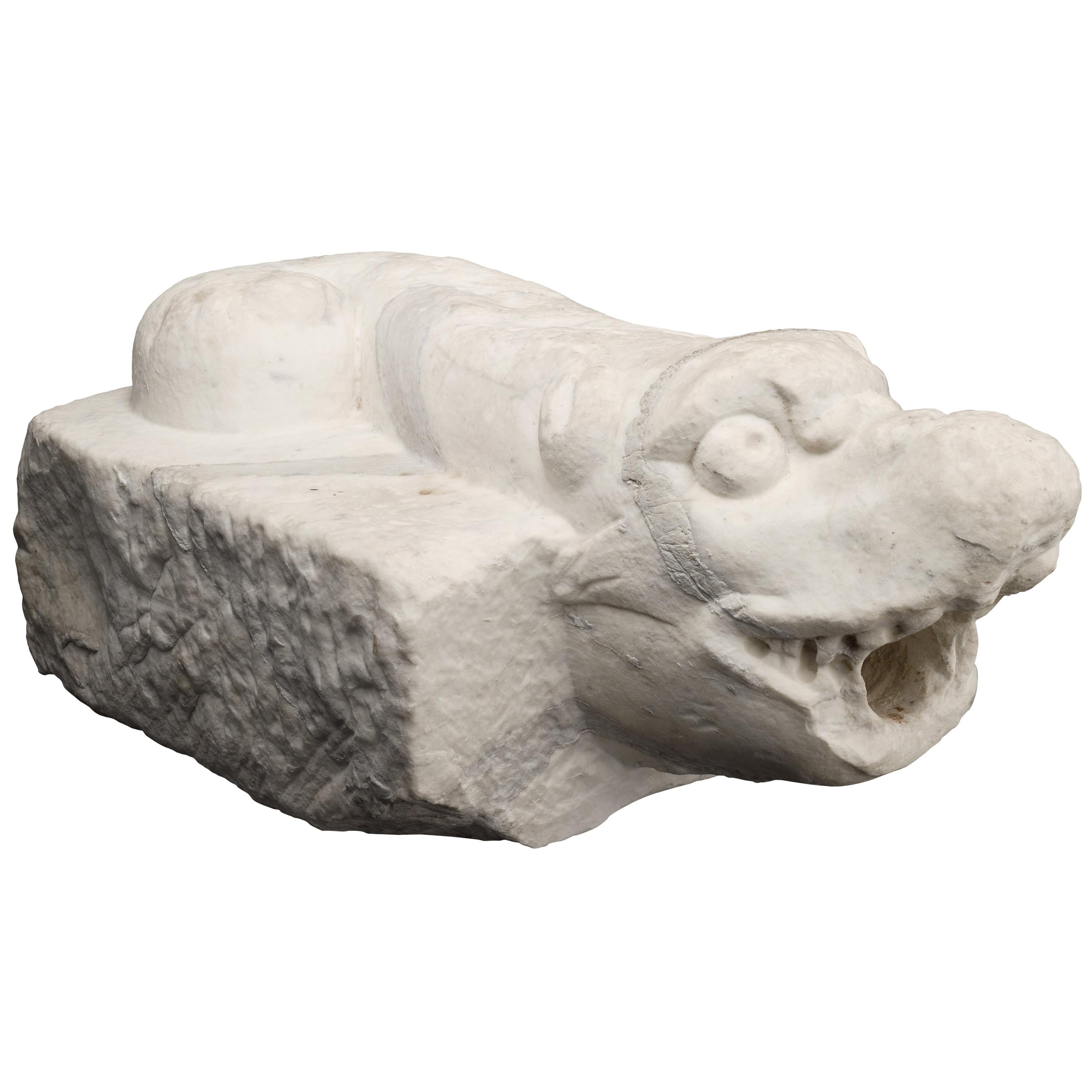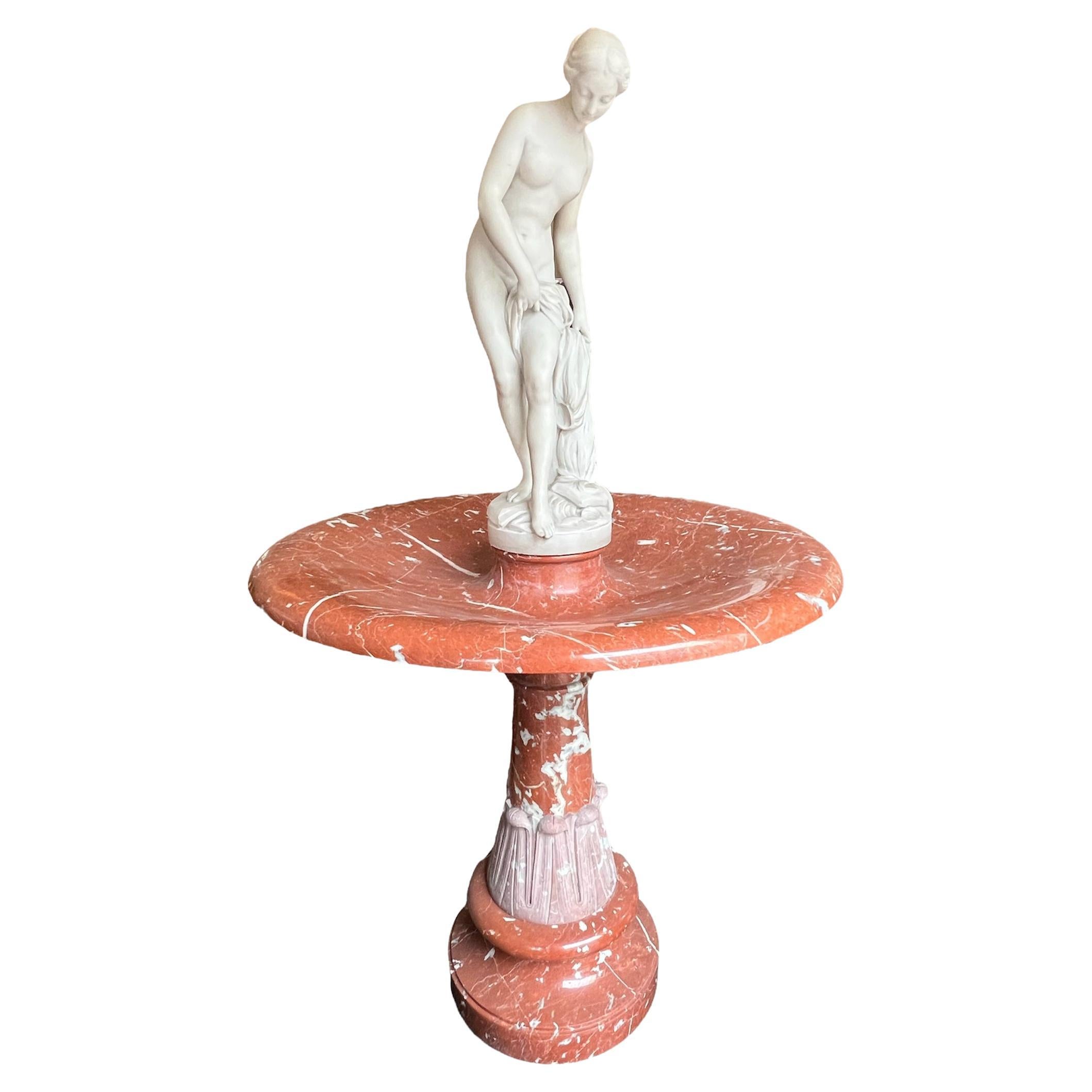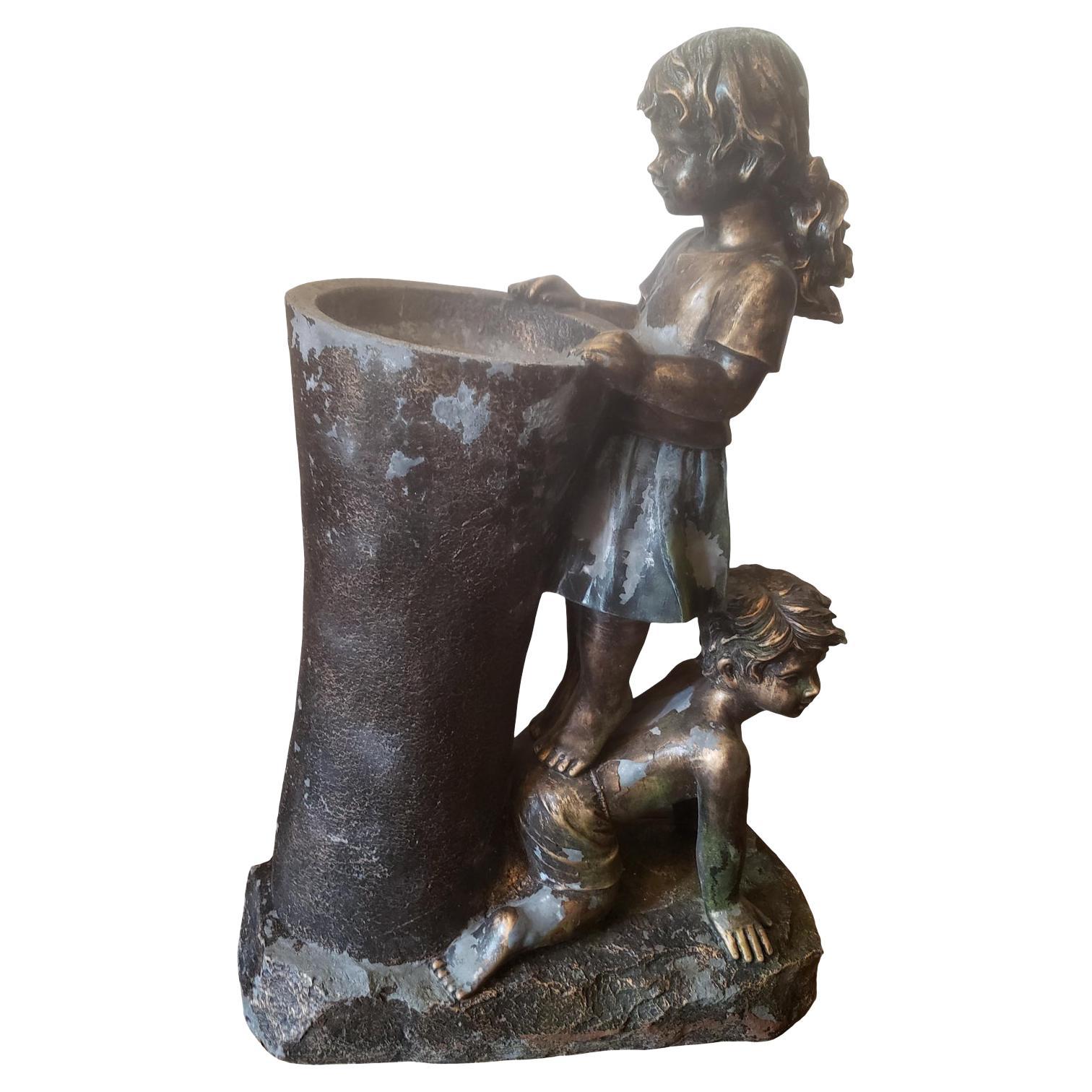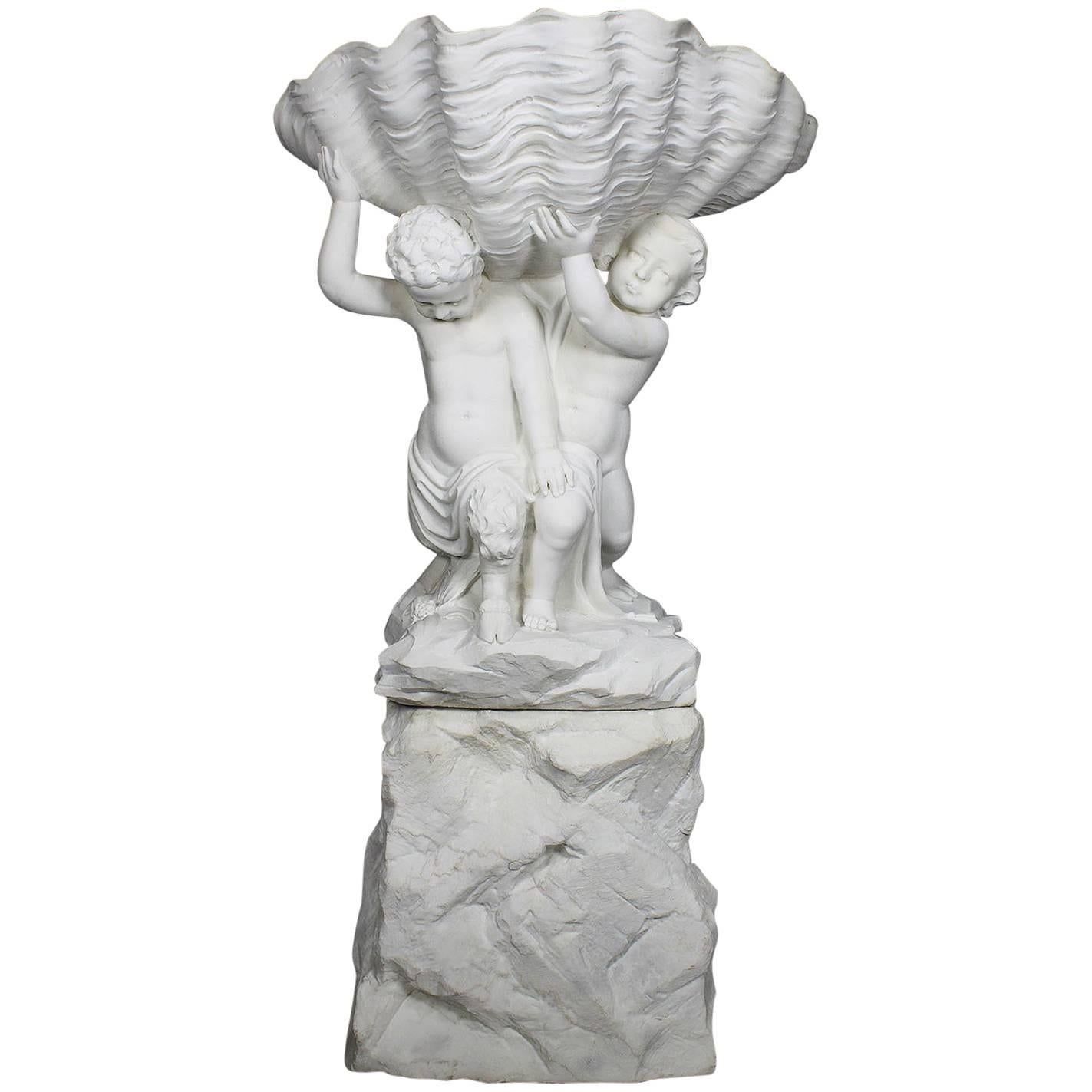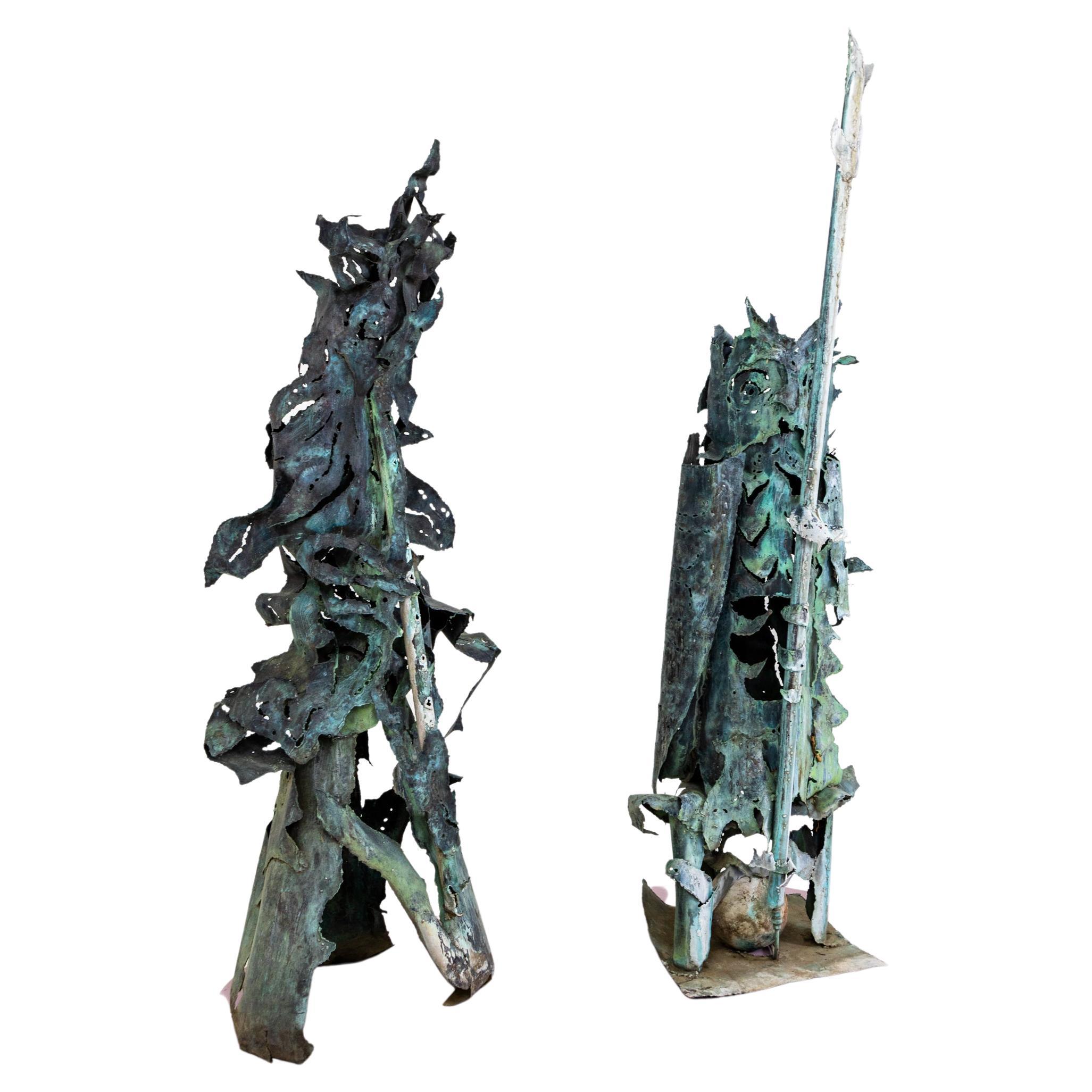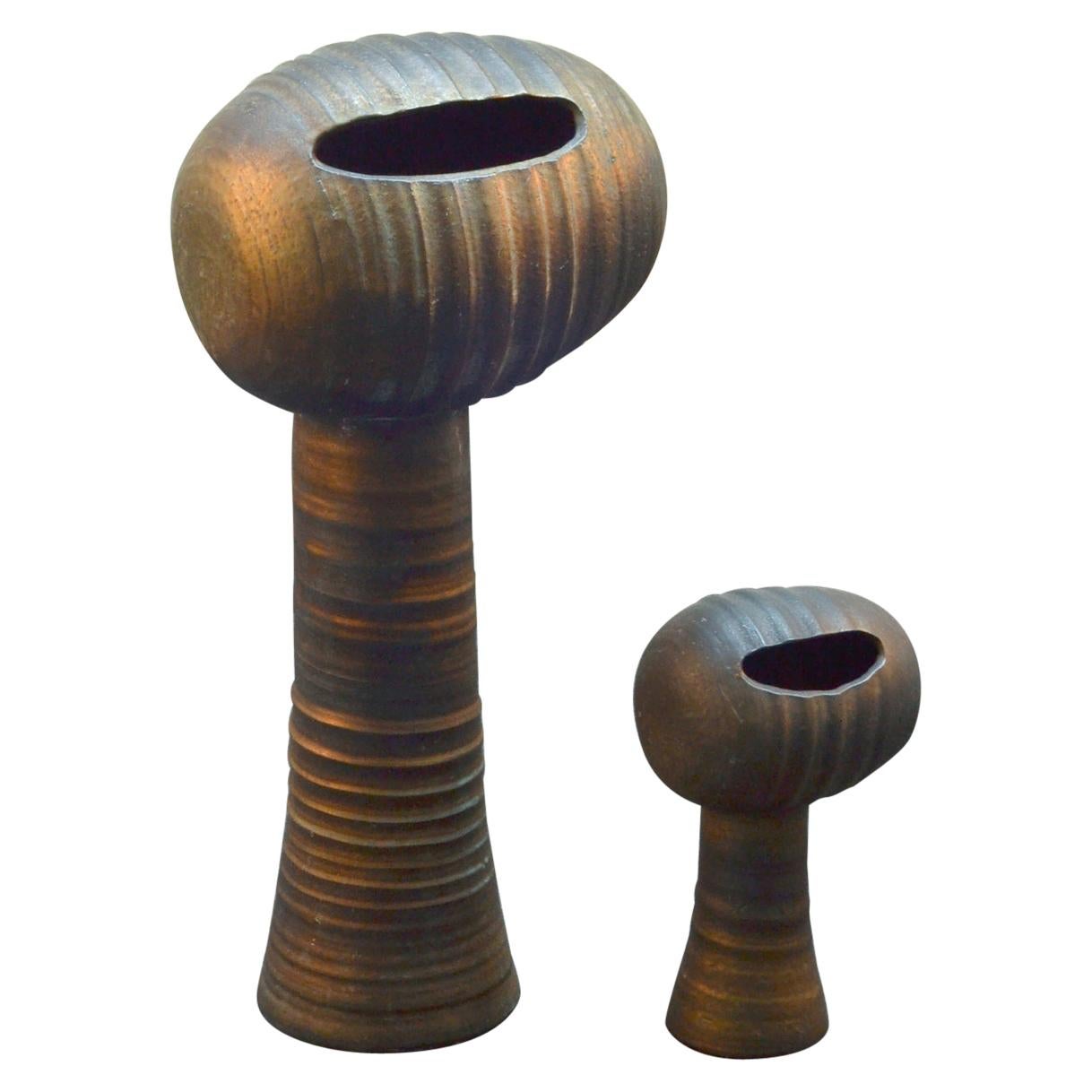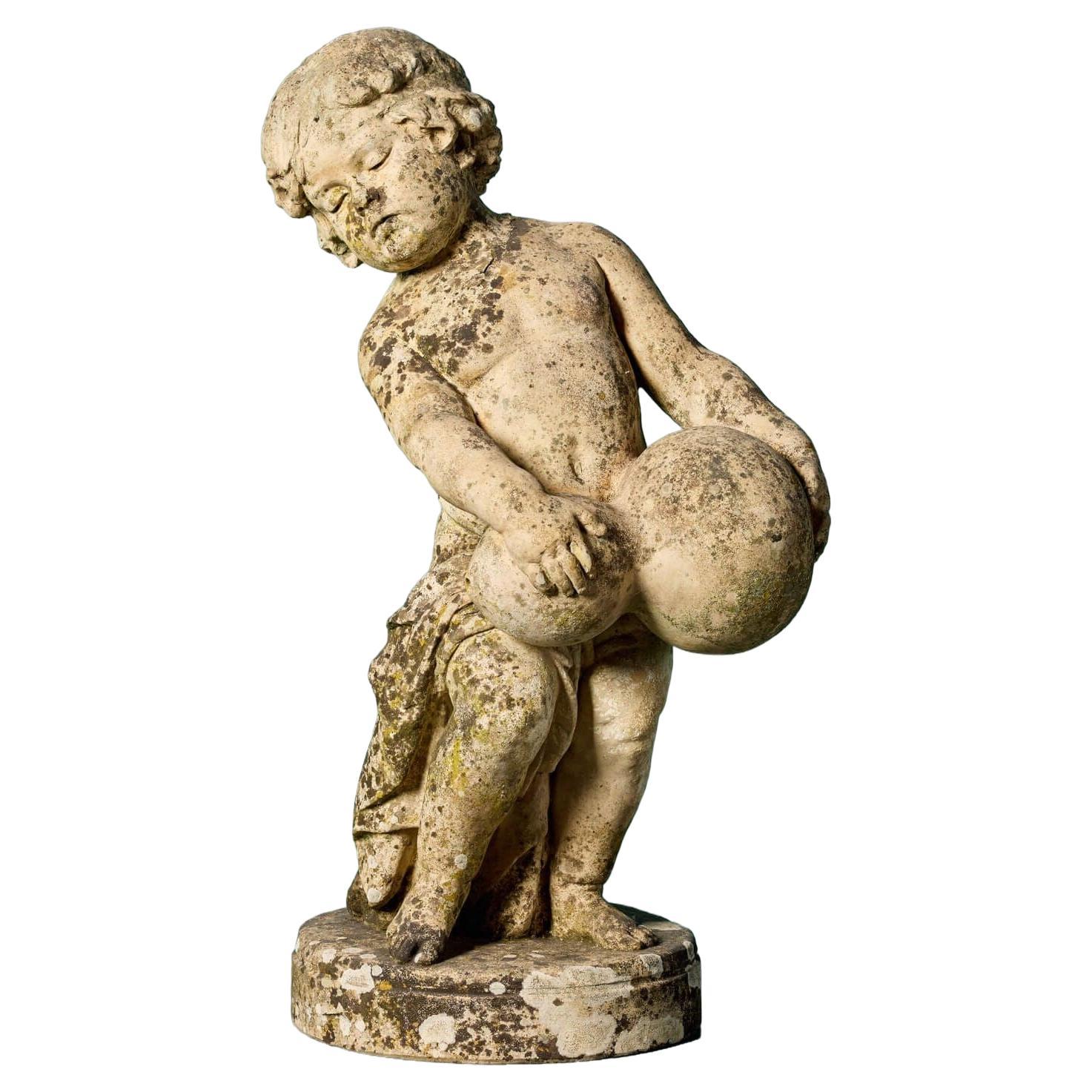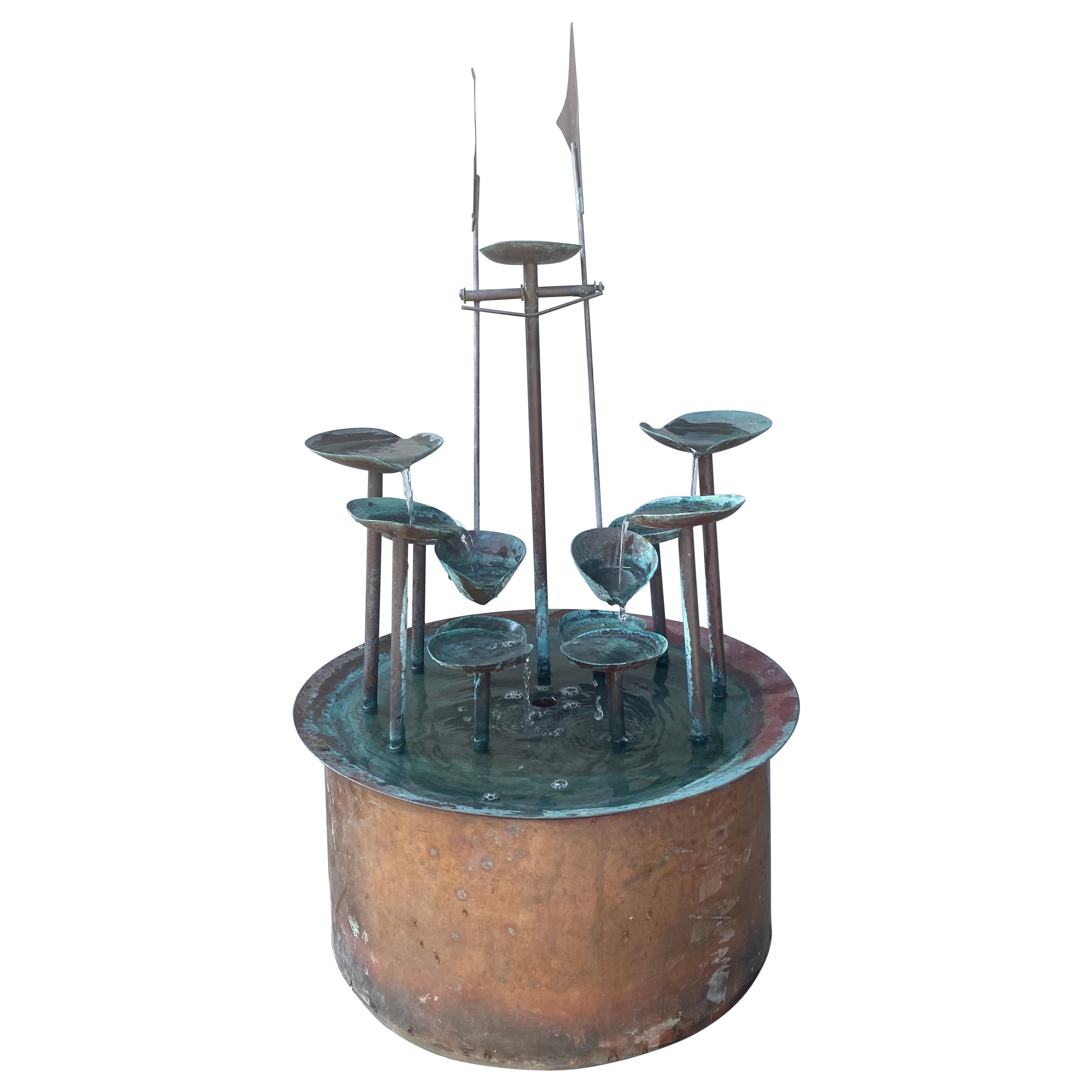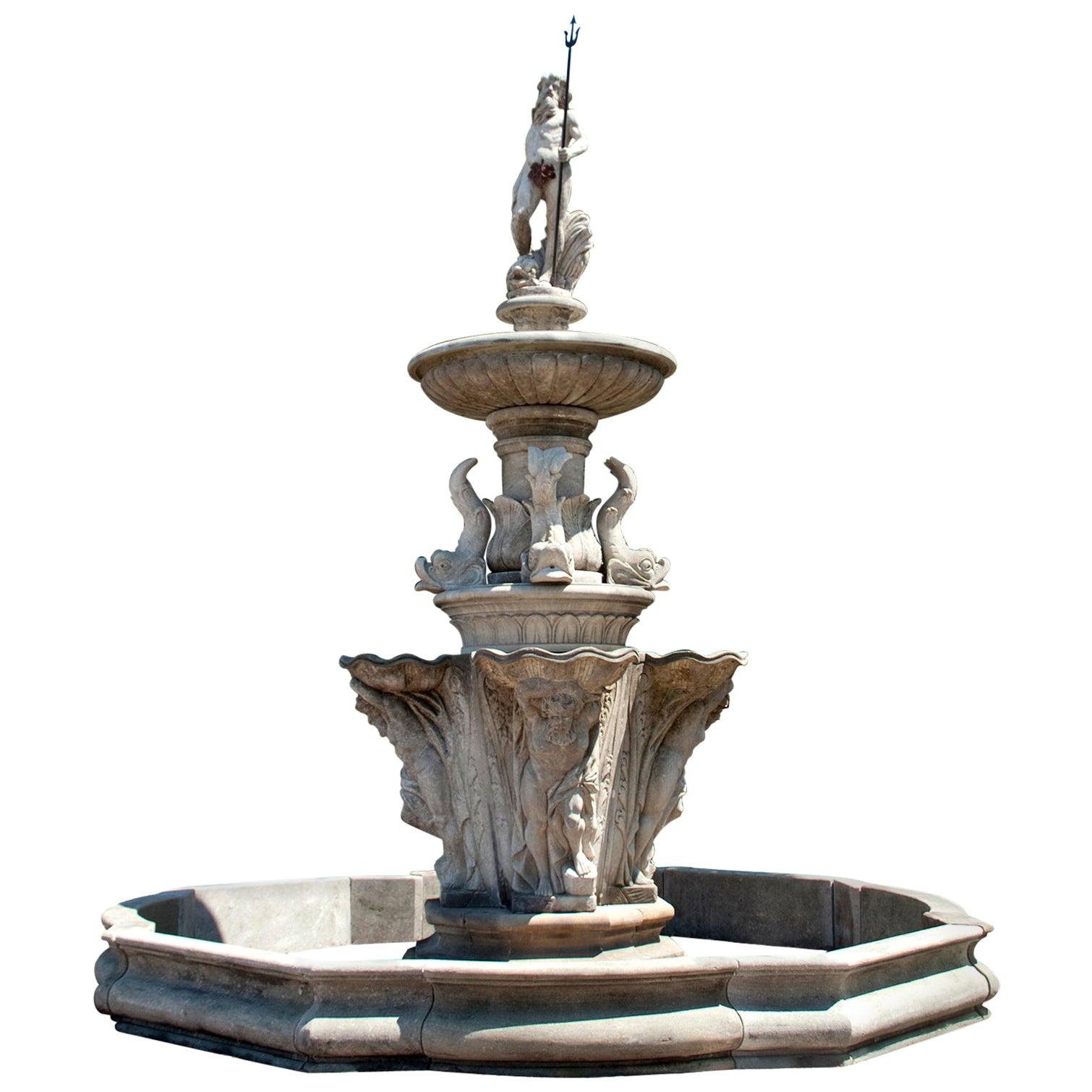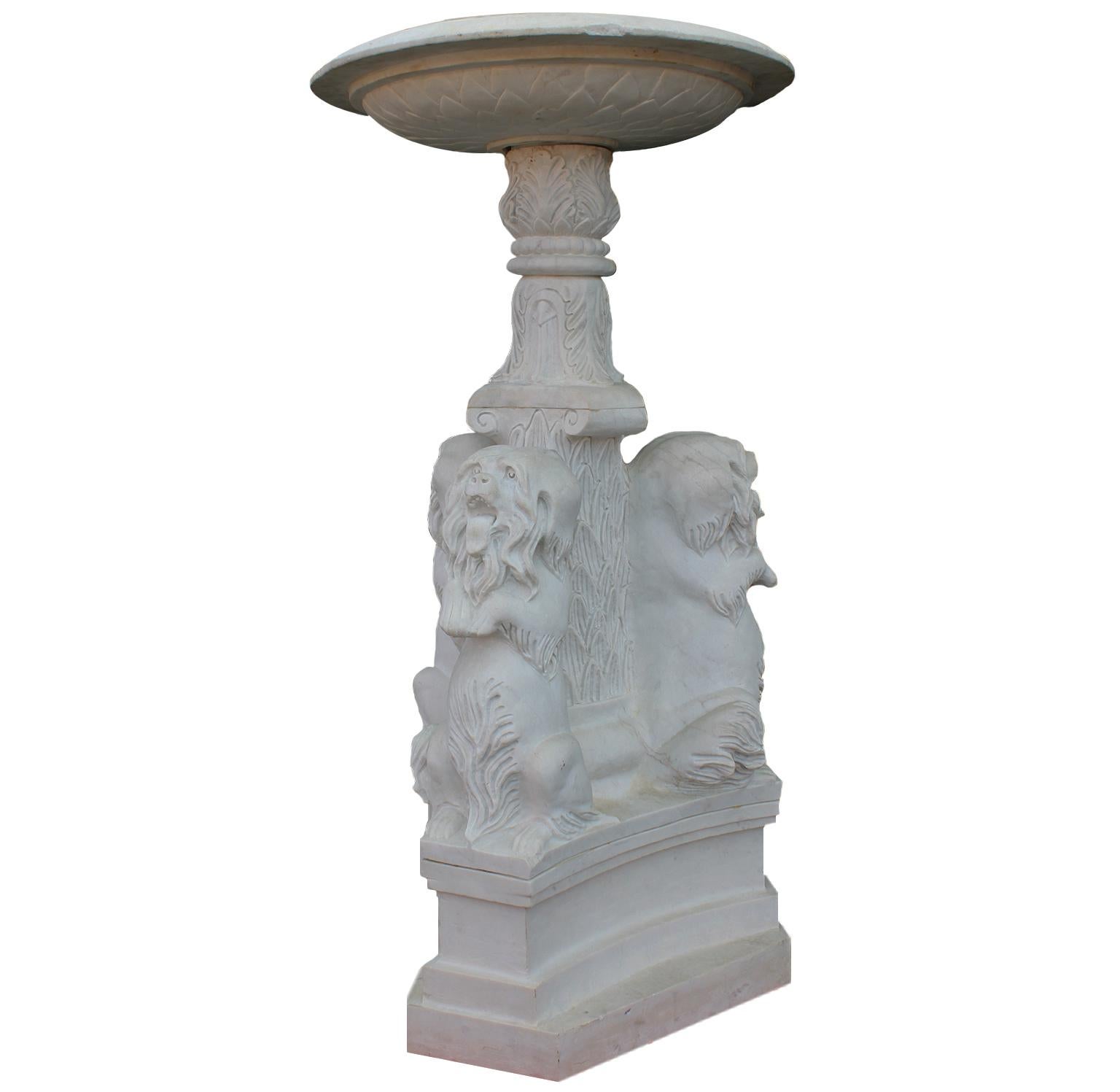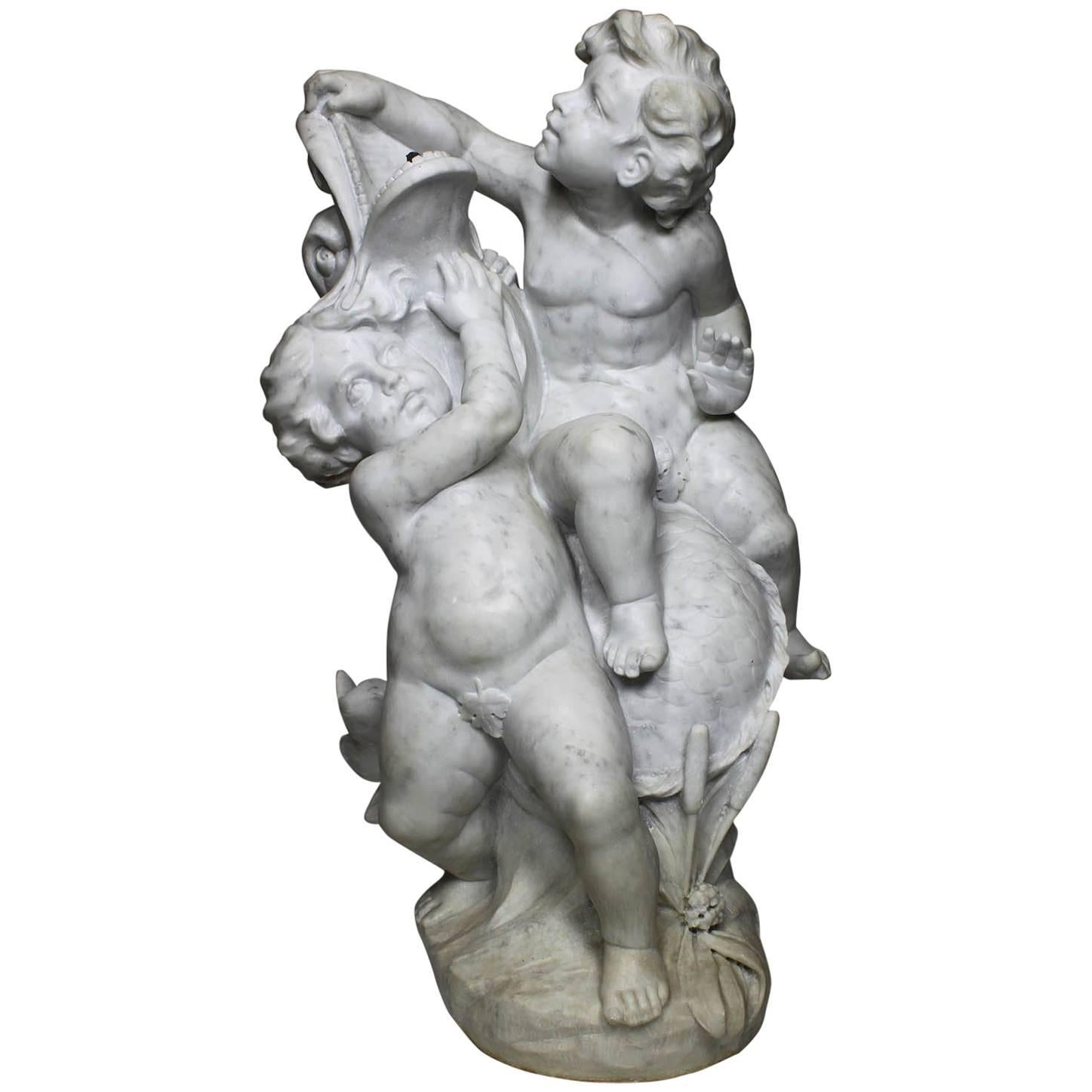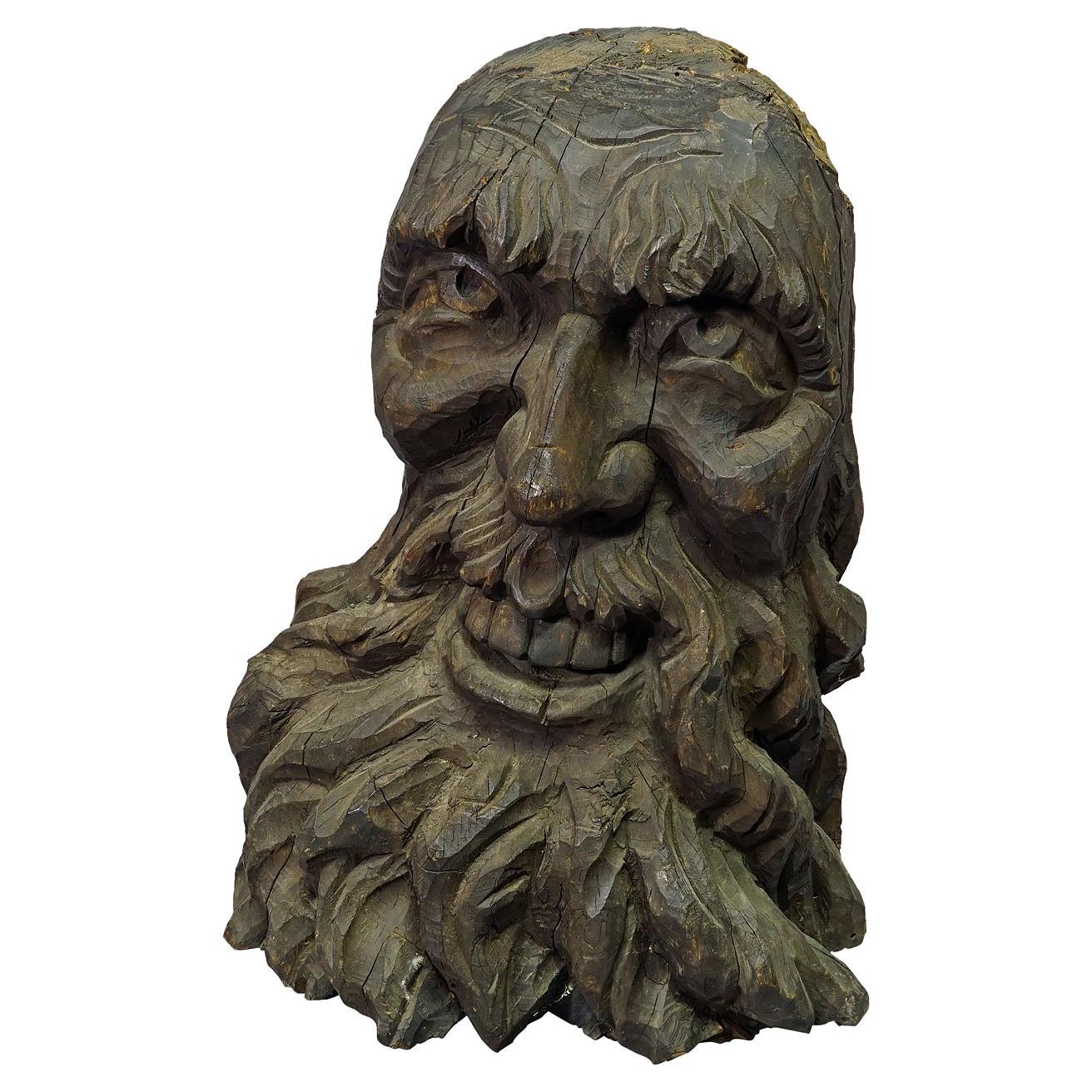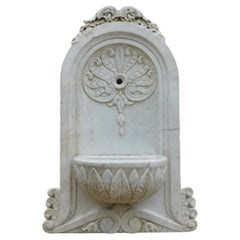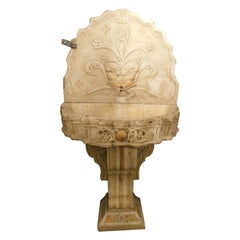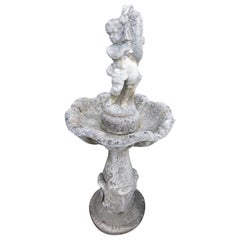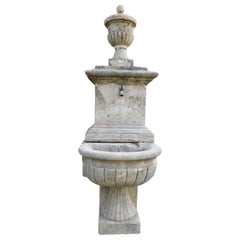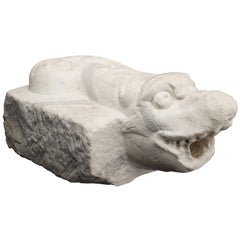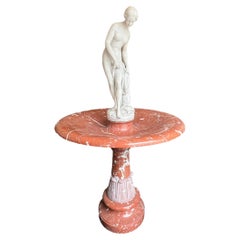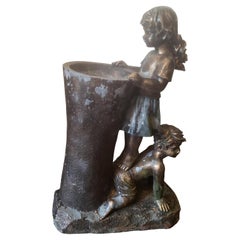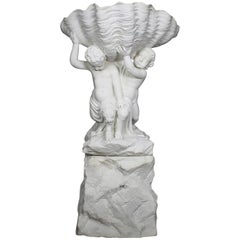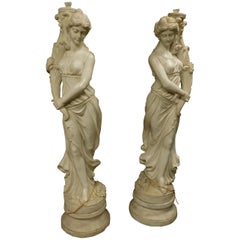
Ancient Pair of Statues (Fountains) White Marble, Water Muses, 1900 Italy
View Similar Items
Want more images or videos?
Request additional images or videos from the seller
1 of 6
Ancient Pair of Statues (Fountains) White Marble, Water Muses, 1900 Italy
$9,293.57List Price
About the Item
- Dimensions:Height: 74.81 in (190 cm)Width: 15.75 in (40 cm)Length: 74.81 in (190 cm)
- Materials and Techniques:
- Place of Origin:
- Period:
- Date of Manufacture:1900
- Condition:
- Seller Location:Cuneo, IT
- Reference Number:1stDibs: LU1116217192551
About the Seller
4.9
Vetted Professional Seller
Every seller passes strict standards for authenticity and reliability
Established in 1988
1stDibs seller since 2014
168 sales on 1stDibs
Typical response time: 10 hours
Authenticity Guarantee
In the unlikely event there’s an issue with an item’s authenticity, contact us within 1 year for a full refund. DetailsMoney-Back Guarantee
If your item is not as described, is damaged in transit, or does not arrive, contact us within 7 days for a full refund. Details24-Hour Cancellation
You have a 24-hour grace period in which to reconsider your purchase, with no questions asked.Vetted Professional Sellers
Our world-class sellers must adhere to strict standards for service and quality, maintaining the integrity of our listings.Price-Match Guarantee
If you find that a seller listed the same item for a lower price elsewhere, we’ll match it.Trusted Global Delivery
Our best-in-class carrier network provides specialized shipping options worldwide, including custom delivery.More From This Seller
View AllWall fountain in white Carrara marble, carved with leaf decorations, Italy
Located in Cuneo, Italy (CN)
Ancient old wall fountain, fountain in white Carrara marble, richly carved with leafy decorations and hole for water nozzle, built in Italy in the 19th century, Maximum dimensions cm...
Category
Antique 19th Century Italian Fountains
Materials
Carrara Marble
Ancient Fountain in Carved and Inlaid Marble, 16th/17th Century, from Sicily
Located in Cuneo, Italy (CN)
Antiques fountain in white marble, richly carved and inlaid with "royal yellow" marble in the pedestal and in the basin, upper part with mythological sculpture...
Category
Antique Early 17th Century Fountains
Materials
Marble
stone garden fountain with carved putto, Italy
Located in Cuneo, Italy (CN)
Vintage garden fountain, in artificial stone or concrete, carved with putto, basin and pedestal, built in the 1900s in Italy
tub circumference measures 60 cm x H 135, base 40 cm
Category
20th Century Italian Fountains
Materials
Concrete
Fountain in gray stone, with spout and applied to the wall, Italy
Located in Cuneo, Italy (CN)
Ancient and important wall fountain, richly carved in gray stone, with iron filler, ashlar basin and wall pillar, built for a garden in Italy, in the 19th century, from southern Ital...
Category
Antique 19th Century Italian Fountains
Materials
Stone
Black Panther Statue of Reused Tire, Italian Art, 1900
Located in Cuneo, Italy (CN)
Black panther statue made in the first decades of the 1900s bda Italian artist with a lot of imagination, made from an iron armor covered with r...
Category
Early 20th Century Italian Animal Sculptures
Materials
Plastic
$5,361 Sale Price
25% Off
Antique Grey Stone Fountain, Hand-Carved, 18th Century, France
Located in Cuneo, Italy (CN)
Ancient fountain in gray stone, hand-carved with the name of the country it comes from, built entirely by hand in the late 18th century, from France....
Category
Antique Late 18th Century French Fountains
Materials
Stone
You May Also Like
Italian Ancient Marble Sculpture Fountain, Late 16th Century
Located in Milano, IT
Sea monster
Carrara marble mouth fountain
Italy, late 16th century
It measures 13.8 x 31.5 x 18.9 in (35 x 80 x 48 cm)
State of conservation: some small evident gaps and widespread signs of wear due to outdoor exposure. The gray marks crossing it do not come from restoration, but are rather the natural veins of the marble.
This work has some morphological characteristics typically associated with the iconography of the sea monster: an elongated muzzle, sharp teeth, protruding eyes, elongated ears, and a coiled serpent's tail.
An in-depth series of studies on artistic depictions of the sea monster attempted to verify how this symbol evolved in antiquity in the European and Mediterranean contexts and how it gradually changed its image and function over time. The iconography itself is mutable and imaginative and its history is rich with cultural and artistic exchange, as well as the overlapping of ideas. This occurred so much that it is difficult to accurately pinpoint the "types" that satisfactorily represent its various developments.
However, we can try to summarize the main figures, starting from the biblical Leviathan and the marine creature that swallowed Jonah (in the Christian version, this figure was to become a whale or a "big fish", the “ketos mega”, translation of the Hebrew “dag gadol”). Other specimens ranged from the dragons mentioned in the Iliad (which were winged and had legs) to "ketos” (also from Greek mythology), the terrifying being from whose Latinized name (“cetus”) derives the word "cetacean". See J. Boardman, “Very Like a Whale” - Classical Sea Monsters, in Monsters and Demons in the Ancient and Medieval Worlds, in Papers presented in Honor of Edith Porada, Mainz am Rhein 1987, pp. 73-84).
In Italy the monster underwent yet further variations: it can be found in Etruscan art on the front of some sarcophagi representing the companion of souls, while among the Romans we find the “Pistrice” (cited by Plinio in Naturalis Historia PLIN., Nat., II 9, 8 and by Virgilio in Eneide: VERG., Aen., III, 427), which appeared in the shape of a stylized hippocampus or a very large monstrous cetacean and evolved into a hideous being with a dragon's head and long webbed fins.
During the Middle Ages, the sea monster was the object of new transformations: at this time, it is often winged, the head is stretched like a crocodile, the front legs are often very sharp fins - sometimes real paws - until the image merges with dragons, the typical figures of medieval visionary spirituality widely found throughout Europe (on this topic and much more, see: Baltrušaitis, J., Il Medioevo fantastico. Antichità ed esotismi nell’arte gotica, Gli Adelphi 1997).
In Italy during the 15th and 16th centuries, the revival of classicism - representative of the humanistic and Renaissance periods - led to a different reading of these "creatures". Indeed, the sea monster was also to find widespread use as an isolated decorative motif, especially in numerous fountains and sculptures where dolphins or sea monsters were used as a characterizing element linked to water (on this theme see: Chet Van Duzer, Sea Monsters on Medieval and Renaissance Maps, London, The British library, 2013).
From the morphological point of view, the "sea monsters" of this period are mostly depicted as hybrid figures, in which the body of a mythological or real being (a hippocampus, a sea snake, a dolphin), is joined to a head with a rather indistinct appearance. It was usually characterized by large upright ears, an elongated snout, sharp teeth and globular, protruding eyes; a complex and indefinite figure, both from the symbolic point of view and from that of its genesis.
The work we are examining is placed as a cross between the medieval sea serpent and the Renaissance dolphin, with stylistic features which recall the snake as often used in heraldry (such as the "snake" depicted in the coat of arms of the Visconti - the lords and then dukes of Milan between 1277 and 1447 - and which, for some, may be derived from the representations of the “Pistrice” that swallowed Jonah).
In the search for sources, Renaissance cartography and in particular woodcuts should not be neglected. See for example the monsters of Olaus Magnus, from the editions of the “Historia de gentibus septentrionalibus” (“History of the peoples of the north”) and the natural histories of Conrad Gesner, Ulisse...
Category
Antique 16th Century Italian Renaissance Animal Sculptures
Materials
Carrara Marble
Fountain in Marble, Year: 1920, France
Located in Ciudad Autónoma Buenos Aires, C
Fountain: Marble Roso Verona
Rosso Francia marble, also known as Rouge incarnat or Languedoc, is a historical French marble used since the 19th century for churches and noble palace...
Category
Vintage 1920s Italian Art Deco Figurative Sculptures
Materials
Marble
Bronze Finish Boy & Girl Water Fountain Statue
Located in Germantown, MD
Vintage boy and girl water fountain statue.
Boy & girl water fountain statue.
Made out of resin and fiberglass materiel with bronze finish. Some...
Category
Mid-20th Century American Rococo Fountains
Materials
Resin
Italian 19th Century Carved Carrara Marble Figural Fountain Jardinière Planter
By Giovanni Battista Lombardi
Located in Los Angeles, CA
A very fine Italian 19th century carved Carrara marble figural fountain "Jardinière" modelled as a standing Putto and a Satyr supporting a sea-sh...
Category
Antique 19th Century Italian Baroque Figurative Sculptures
Materials
Carrara Marble
$28,950 Sale Price
35% Off
Water Fountains, Italy, 1970s
Located in Greding, DE
Pair of gargoyles in fanciful design and decorative patina. Dimensions owl: 235 x 75 x 80 cm, flute player: 196.5 x 80 x 73 cm.
Category
Vintage 1970s Italian Brutalist Fountains
Materials
Other
$14,297 / set
Architectural Ceramic Water Fountains Sculptures Bronze Glazed 1960 Mobach
By Mobach
Located in London, GB
The sculptural head shaped water features hand-turned in ceramic, produced by Mobach in Utrecht during the 1960's. Mobach produced this unique mat bronze lustre glaze has a result of...
Category
Vintage 1960s European Mid-Century Modern Abstract Sculptures
Materials
Ceramic
